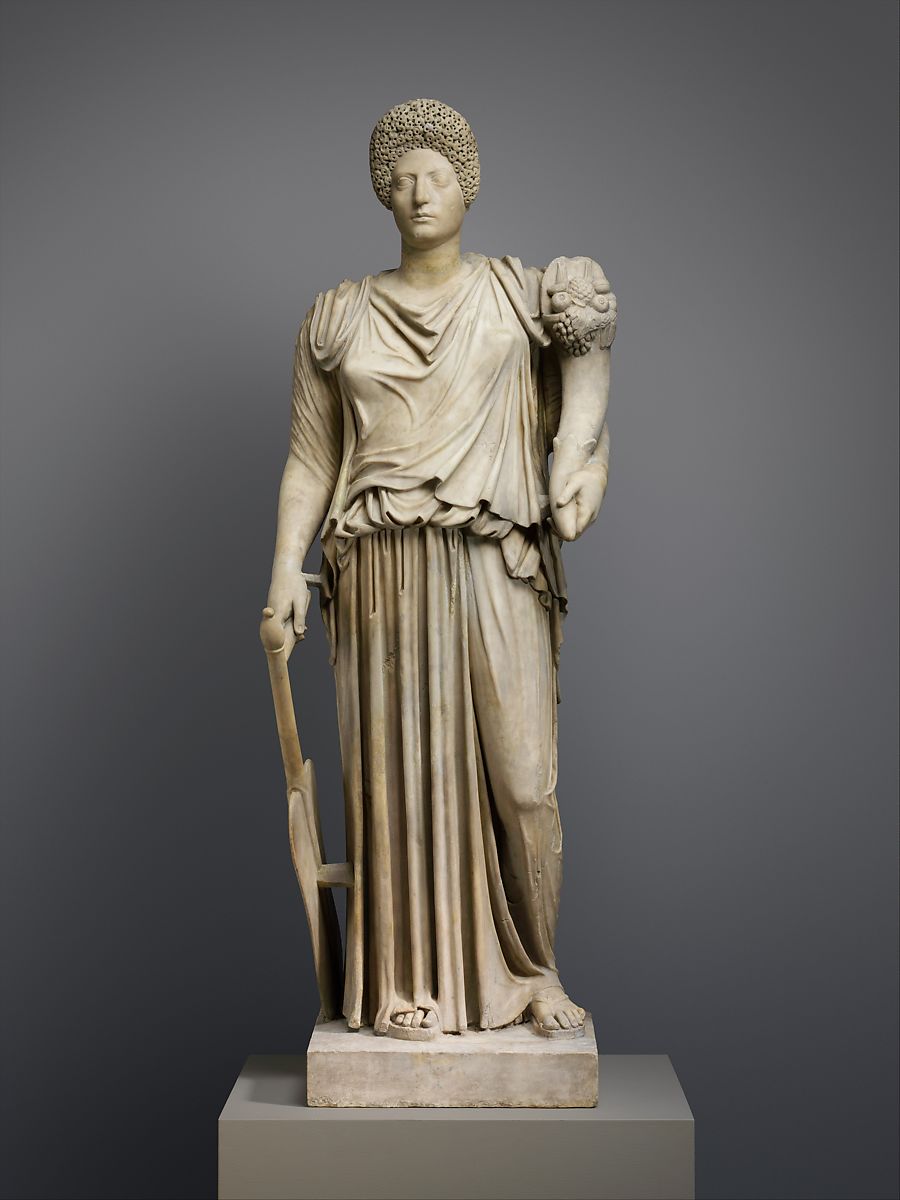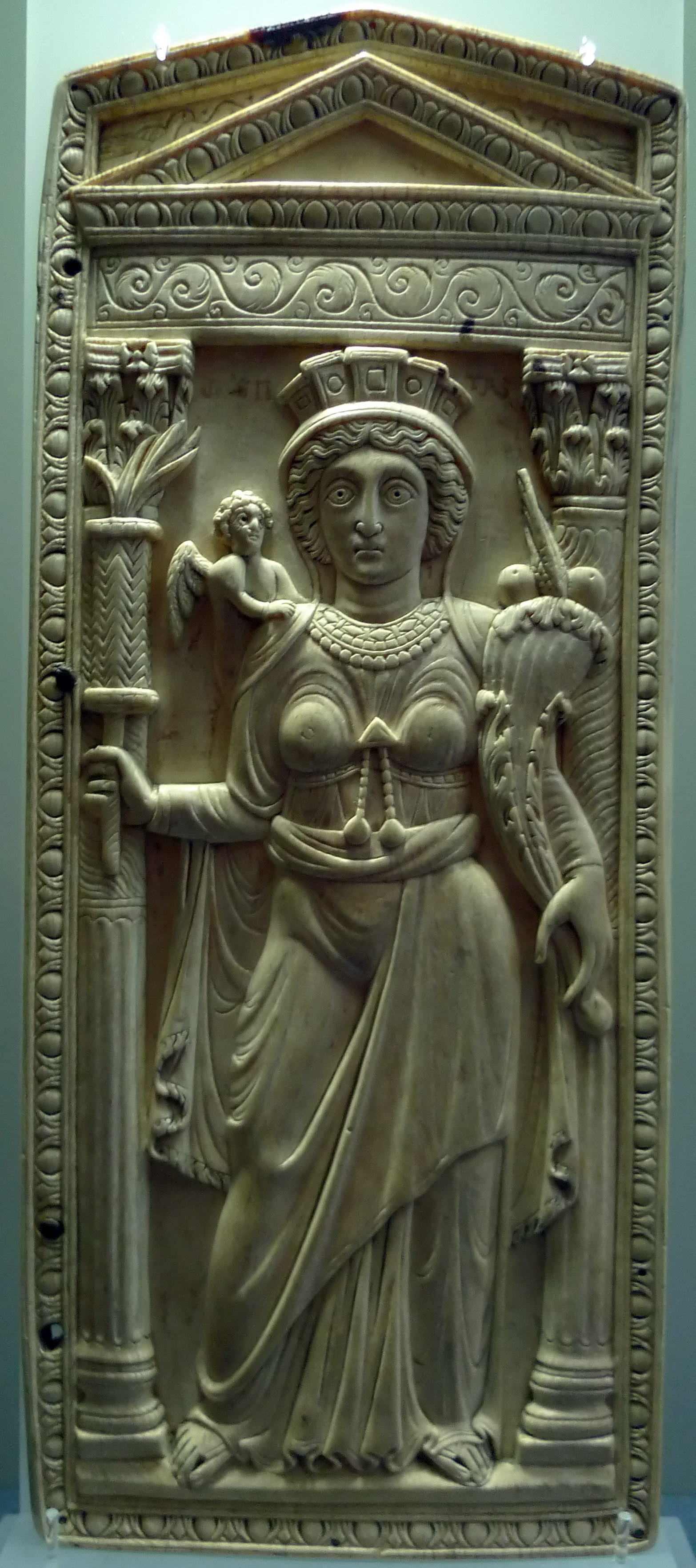

If you celebrate Thanksgiving in the United States, decorations for the feast might well include a representation of a cornucopia, a literal “horn of plenty” (Latin cornu + copiae) spilling over with fruits, vegetables, and flowers suggestive of a generous harvest. Wondering where this symbol came from and how it got onto Aunt Marian’s Thanksgiving table? Wonder no more: armed with 139 online records for the subject “cornucopia,” the Index is here to help.

The cornucopia originated in classical mythology, where it bore connotations of plenty and good fortune. Explanations of its origins vary: according to Ovid’s Metamorphoses (ix.8), the Greek demigod Herakles tore the horn from the head of the shapeshifting river god Achelous, whom he wrestled to win the hand of Achelous’s daughter Deianira. Heracles then gave it to the Naiads, who turned it into a horn that produced an endless supply of foodstuffs. The Index records include an engagingly “modernized” version of this scene in a fifteenth-century manuscript of John Gower’s Confessio Amantis now in the Morgan Library (Fig. 1). Several other ancient sources attribute the horn to the goat Amalthea, which suckled Zeus on Crete when he was hidden there by his mother Rhea from his child-eating father Cronus. When Zeus accidentally broke off one of the goat’s horns, it became imbued with the power to be filled with whatever the owner might desire.

The positive connotations of the cornucopia made it a popular classical attribute. Usually configured as a twisted horn from which fruit, flowers, or other plants emerged, it became associated with a number of deities and personifications, including Demeter, Gaia, Persephone, and Tyche, the Roman Fortuna. A Roman statue of Tyche-Fortuna from the first or second century CE, today restored with the portrait head of an unknown woman (Metropolitan Museum of Art), portrays the goddess holding a ship’s rudder, alluding to how fortune steers human fate, in her right hand and a cornucopia filled with fruit in her left (Fig. 2).

A rendering of Fortuna with these attributes also can be found in a fresco from the synagogue of Dura Europos, produced by 244 CE (National Museum of Damascus). One of many classical references found in these early Jewish wall paintings, it appears as a faint line drawing on the right lower panel of the central door (Fig 3). In both these cases, the overflowing horn suggests a hope for the abundance that comes from good fortune.

During the Middle Ages, the symbolic associations of the cornucopia expanded significantly. While it could continue to promise good fortune, it also appeared as a sign of homage, as in the Gospels of Otto III, produced in the Holy Roman Empire around the year 1000 (Bayerische Staatsbibliothek). Here, the four personified provinces who bring tribute to the emperor include a personification of Germania holding a golden cornucopia (Fig. 4); although no fruits are visible, its implications of earthly abundance would have made it an appropriate offering for the imperial ruler.

The cornucopia can also be found as an attribute of personified geographical locations, such as cities or waterways. On the right-hand leaf of a fifth-century diptych representing the cities of Rome and Constantinople (Vienna, Kunsthistorisches Museum), the figure representing the Byzantine capital holds a large cornucopia in her left hand (Fig. 5); in the Stuttgart Psalter (Württemburgische Landesbibliothek Stuttgart), the personified river Jordan holds a cornucopia sprouting leaves and flowers (Fig. 6).

The cornucopia could also represent more abstract values, including charity, hope, and abundance itself. The portrayal of Abundantia as a lesser goddess who holds a cornucopia originated in Roman tradition, and it persisted throughout the Middle Ages as a secular personification with very similar iconography.

In the early modern era, the formula was further popularized by artists such as Peter Paul Rubens, whose majestic red-robed Abundantia, painted circa 1630, spills an array of apples, grapes, figs, and other fall fruits from a cornucopia to the ground, to the delight of the putti who scramble for them at her feet (Fig. 7). This may be the formulation of the horn of plenty most familiar to modern viewers, for whom a cornucopia centerpiece suggests both the gratitude for good fortune and the spirit of generosity that both stand at the core of the modern Thanksgiving holiday.